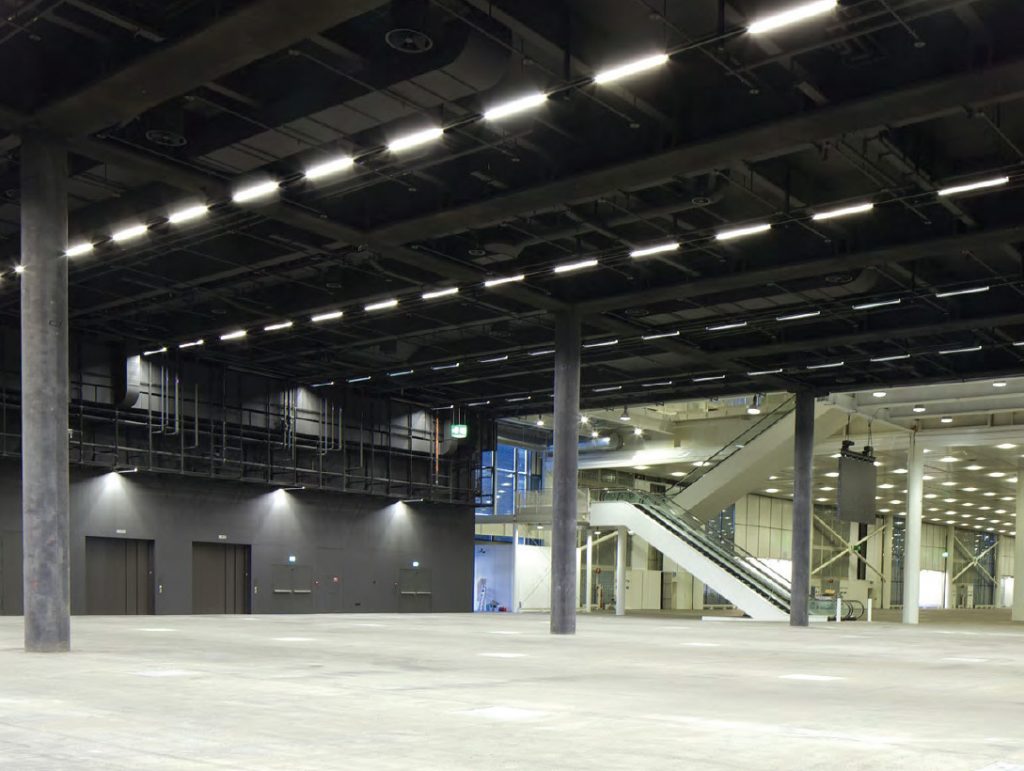
Why is lightning in the workplace important?
Enter a room with warm inviting light and you’ll immediately feel relaxed. Enter the same room with harsh lighting and your mood will completely change. But why is this?
Lighting has important effects that can impact health.
Also, good lighting design can improve your mood and contribute to a better night’s sleep. Besides, good light can help reduce depression and increase cognitive performance such as reaction time.
Therefore, it shouldn’t be ignored. It’s a lot more important than you might imagine.
When you are designing your space, lighting should be considered from the beginning.
Without decent lighting, the space of a room will feel small and cramped. Poor lighting will reduce the productivity of employees while good lighting will increase their productivity. When someone’s mood is high, their productivity increases and lighting plays an important role in this.
There are three fundamental elements of lighting design that can make your space a place of charm:
Ambient Lighting
It is also called general lighting and serves as the primary source of light for a certain room. It is the foundation of all the lighting of a room. It improves the sense of warmth and depth of a room or space.
It works to provide a comfortable level of illumination without too much glare. This allows you to navigate an entire room safely too. A central source of it for every room is essential to achieve an excellent lighting plan. A perfect source needs a strategy in choosing which lights to use and in what area or part of the room to place it.
It is calming and more soothing to the eyes and can allow you to alter the mood in your space.
Task Lighting
Task lighting does exactly what the name suggests – it enables people to carry out certain tasks in that room. It provides increased light for specific tasks in a room that may already have some ambient light. Task lighting is especially useful for seeing small objects or objects of low contrast. For example, a person who is sewing would need extra light to easily see fine details. It can also provide increased light for tasks that require accuracy, such as reading directions on a bottle of medicine or chopping vegetables in the kitchen. Also, it is useful for workspaces, such as woodshops in the garage and for software or hi-tech industries, or any other industry where tasks cause eye strain or employees work in front of a computer for long hours.
In short, task lighting isn’t used for decorative purposes, but for practicality, helping you complete specific tasks around your home.
Accent lighting
The third and final layer of lighting design is accent lighting, it is also called highlighting.
The main purpose of accent lights is to add style and to personalize your space just how you want it. Appropriate use of accent lighting should draw attention to architectural details and other points of interest in your home. It is used inside and outside the home to feature locations such as an entrance or to create dramatic effects. Accent lighting is achieved by properly locating directional fixtures or bulbs. These fixtures should be located close to the object they illuminate. Install separate controls for accent fixtures so they can be used only when needed and sensitive objects such as photographs and artwork are exposed to less light. Avoid direct and reflected glare by using proper mounting locations and aiming angles and choosing fixtures that have baffles or shields to prevent a view of the light source. Additionally, choose background colors that contrast strongly with the highlighted object to reduce the light output required to achieve a dramatic effect.
With the ability to affect the mood, shape, and size of a room, lighting design is the most important element to consider when designing a space.
Thank you for your time, you can contact Exceptional company for hygiene and Food and Beverages Via:
+966 12 66 333 18
info@exceptionlco.com
